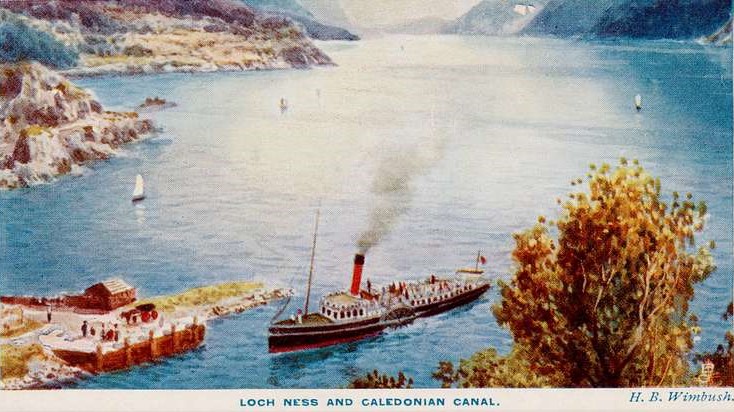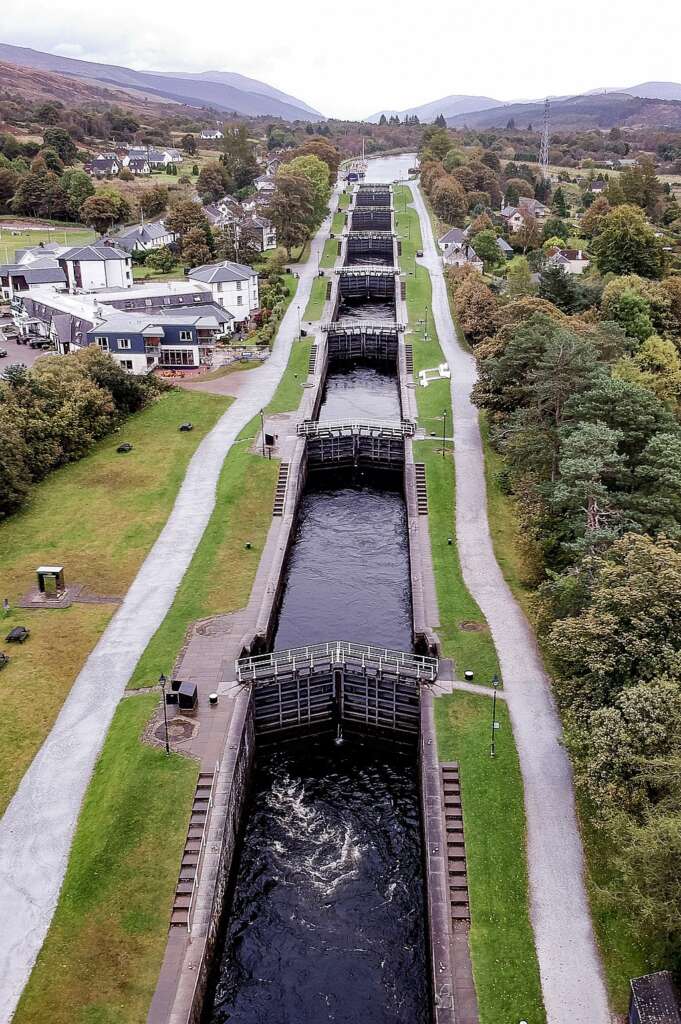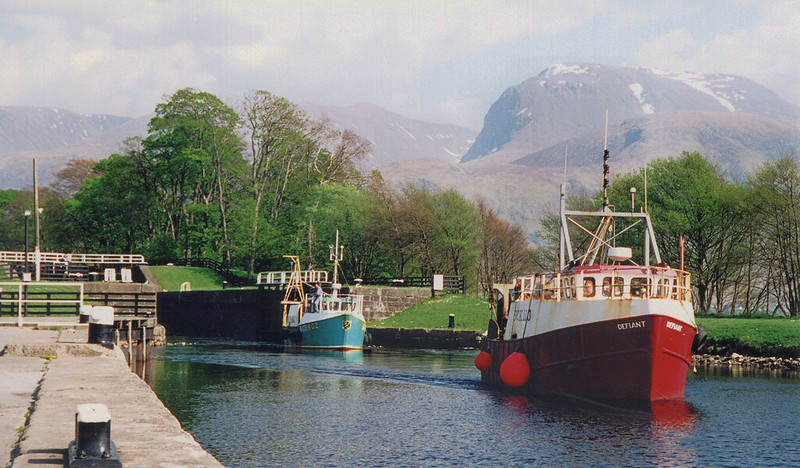Caledonian Canal – A Rich History

Scotland is a land of rugged landscapes, rich history, and breathtaking scenery. Among its many treasures, the Caledonian Canal stands out as a marvel of engineering and a gateway to some of the most stunning vistas in the Scottish Highlands. Stretching from the east to the west coast, the Caledonian Canal weaves its way through lush valleys and majestic lochs, offering a unique perspective on Scotland’s natural beauty and historical heritage.
The Caledonian Canal is a 60-mile-long waterway that connects the east coast at Inverness with the west coast at Corpach, near Fort William. Conceived by engineer Thomas Telford and completed in 1822, the canal was designed to provide a navigable route across the Great Glen, a geological fault line that divides the Scottish Highlands.
The canal comprises a series of natural lochs and man-made sections, creating a seamless waterway that allows boats to traverse from the North Sea to the Atlantic Ocean. The key water bodies along the canal include Loch Dochfour, Loch Ness, Loch Oich, and Loch Lochy. Each loch has its own unique charm, surrounded by verdant hills and dotted with historic landmarks.

At the time of its construction, the Caledonian Canal was a testament to the engineering prowess of the early 19th century. The canal features a system of locks, aqueducts, and swing bridges that help boats navigate the varying water levels and terrains.
One of the most impressive engineering feats is Neptune’s Staircase, a staircase lock consisting of eight locks that raise boats 64 feet in a quarter of a mile. Watching boats navigate this series of locks is a mesmerizing experience that transports visitors back to a bygone era.
Somewhat tragically the construction of the canal was met with many problems, including the death of John Telford, the manager of the northern section of construction, who is believed to have died from the extreme stress and difficulty associated with the work. The number of employees working on the canal fluctuated, as many men would take time off during the summer months to cut peat, fish herring, or harvest potatoes. Often the men would not return after the harvest season, as working during the winter months was uncommon. The men who did work the winter used it as a means to supplement their already meager incomes.
All-in-all, it took from 1802 to 1822 to finish construction, taking an extra 12 years and costing an estimated £910,000. Unfortunately, during the time it took to construct the canal, steam powered iron-hulled ships had begun to be introduced, which were usually too large to use the canal. Similarly, the Royal Navy had no need to use the canal, as Napoleon had been defeated 7-years prior in 1815 at Waterloo, so there was little perceived threat to shipping routes like the canal.

Later, some sections of the canal would collapse as the defects in the material used became apparent. The canal was shutdown from 1843 to 1847 to complete repairs, in which the depth of the canal was increased.
Commercially, the repair was a failure as little of the old traffic returned to the canal after the repairs, however, it became a tourist destination due to the dramatic scenery along the canal.
In 1873, Queen Victoria took a trip along the canal, increasing its popularity and drawing attention to the region.
For many, the highlight of a journey along the Caledonian Canal is the passage through Loch Ness. Renowned for the mythical creature said to inhabit its depths, Loch Ness is the largest freshwater lake in the British Isles. As boats cruise through its dark waters, passengers can gaze upon the misty hillsides and ancient Urquhart Castle, adding an element of mystery and allure to the journey.
The Caledonian Canal is not just a feat of engineering but also a gateway to some of Scotland’s most picturesque landscapes. As boats make their way through the canal, passengers are treated to panoramic views of rolling hills, dense woodlands, and the towering peaks of Ben Nevis, the highest mountain in the British Isles. The changing colors of the landscape with the seasons make each journey a unique visual spectacle.

Beyond the natural beauty, the Caledonian Canal offers glimpses into Scotland’s rich cultural and historical tapestry. Along the route, travelers can explore charming villages, visit historic castles, and enjoy the warm hospitality of local pubs. From the historic town of Inverness to the shadow of Ben Nevis, the canal weaves through landscapes that have witnessed centuries of Scottish history.
The Caledonian Canal is not just a waterway; it’s a journey through the heart of Scotland, a passage that blends natural wonders with human ingenuity.
Whether you’re an avid sailor, a history enthusiast, or a nature lover, the Caledonian Canal promises an unforgettable experience. As you navigate its waters, you’ll find yourself immersed in the enchanting beauty and rich history that define this extraordinary Scottish marvel.

